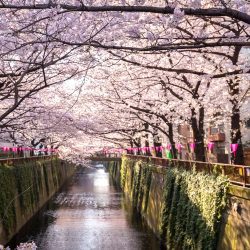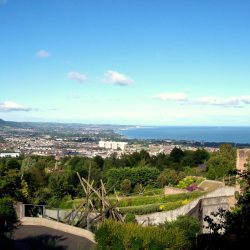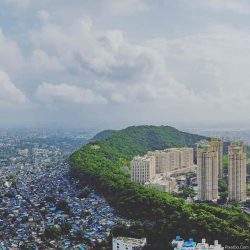Urban forests are exactly what they sound like: a collection of trees that grow within a city. They can refer to large forested city parks (like Stanley Park, or Central Park in New York), but also it can include any trees or plants growing in and around a town or city.

Urban Forests: Worth the Effort?
The presence of trees in towns and cities enrich each of our lives in more ways than we can count. In Vancouver, especially, we’re blessed with an abundance of trees within our city: in fact, we’re ranked 2nd in the world for tree canopy coverage (after Singapore), and our canopy is still growing as we plant more and more trees.

If you’re like most people, you probably find the presence of trees calming and revitalizing. Vancouver is a well-known haven for outdoorsy people, who flock here from abroad because green life bleeds further into our urban centres than most other cities could even dream.
With forests and mountains at our doorstep, it’s often easy to take for granted the positive outcomes of having access to so much green space.
In any city, urban forests seem like a simple idea; however, the planning and ongoing maintenance of an urban forest can be pretty complicated. It’s an enduring commitment that requires time, effort, patience, and money.
So, are the benefits of urban forests worth the effort? Spoiler alert: they absolutely are.
A Brief History
Though older concepts of urban forests (shared wooded areas capable of supplying raw materials for heating, cooking, furnishing, hunting, and more) have existed for most of recorded history, its applications today are much, much different.
That’s because they apply to a more modern demographic; a global community whose desire for urban forests stems from their aesthetic, environmental, economic, and social benefits.

It’s also because the definition of the word “urban” has changed. A city in 2021 is mind-bogglingly different than a city 200+ years ago. For example, the advent of skyscrapers in the late 1800’s, which clad urban skylines soon thereafter in steel, concrete, and glass, has had a direct influence on the necessity of nearby tree life.
While older cities in Europe and North America had to clear cut trees for horizontal expansion as their population grew, newer cities could now expand vertically, allowed them to preserve more parks and leave trees to line streets and boulevards.
Urban forestry, as the concept we recognize today, was created in the 1970s. Since then, it has been evolving drastically in function and scope. Like their forests, cities, their infrastructure, and their populations continue to change and grow.
As redefined in 1993, urban forests are: “…the sustained planning, planting, protection, maintenance, and care of trees, forests, greenspace and related resources in and around cities and communities for economic, environmental, social, and public health benefits for people.” – (Deneke, F. Urban Forestry in North America (1993))
In other words: as cities progress, the benefits of urban forests are becoming increasingly apparent.
The Many Benefits of Urban Forests
Urban forests can…
Environmental Benefits
- Reduce air pollution
- Provide oxygen
- Provide natural stormwater management
- Improve water filtration
- Reduce urban heat island effect, thereby cooling cities
- Reduce energy use in buildings
- Provide food
Social Benefits
- Promote mental well being
- Promote physical and emotional healing
- Reduce stress, heart rate, and blood pressure
- Reduce crime
- Promote physical activity
- Promote social interaction
- Reduce urban noise
Economic Benefits
- Increase property values
- Positively influence visitors perceptions
- Promote tourism
- Reduce heating and electricity costs
- Add value for every dollar spent maintaining them
- Improve restaurant profits
Aesthetic Benefits
- Beautify cities
- Conceal unattractive or dirty features
- Drastically increase green space
- Look great!
- Fits growing biophilic design trends
Famous Urban Forests
Here are 9 famous examples of cities that have really adopted urban forests into their current design and architecture.
|
Rio de Janiero, Brazil
|
Tokyo, Japan
|
Belfast, Ireland
|
|
Singapore
|
Mumbai, India
|
Moscow, Russia
|
| New York City, USA
|
Cape Town, South Africa
|
Vancouver, Canada
|
Vancouver’s Urban Forest
Vancouver considers every single tree in the city a part of its larger urban forest! As such, their overarching vision is to “protect, plant, and manage trees to create a diverse, resilient, and beautiful urban forest on public and private lands across the city.”
Having planted over 150,000 new trees in the last decade, Vancouver is on track to meet their goal of becoming one of the literal greenest cities in the world by promoting engagement, stewardship, and sustainability.
We’re thrilled to have played a tiny part of adding to and preserving Vancouver’s thriving green topography!










Comments are closed here.